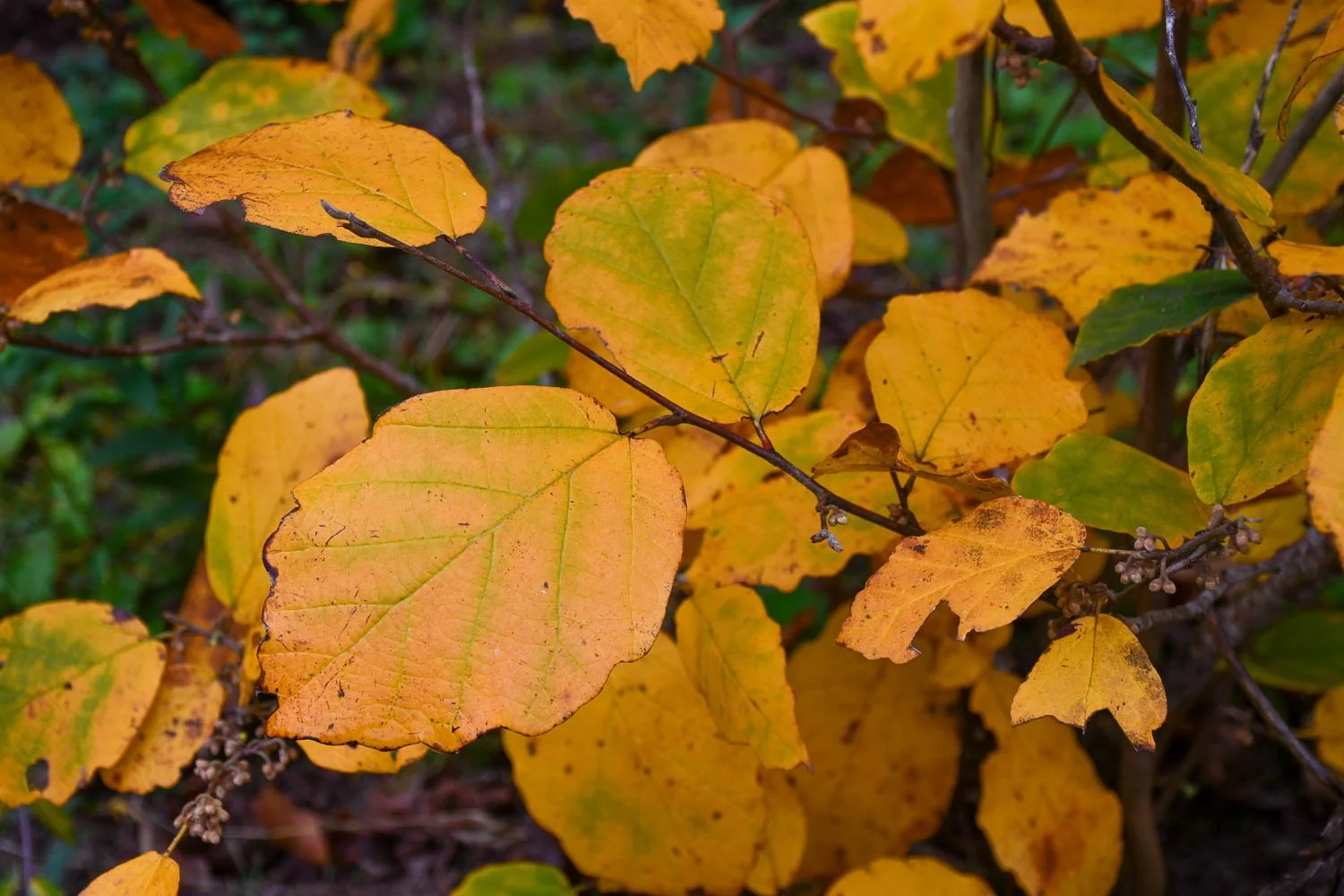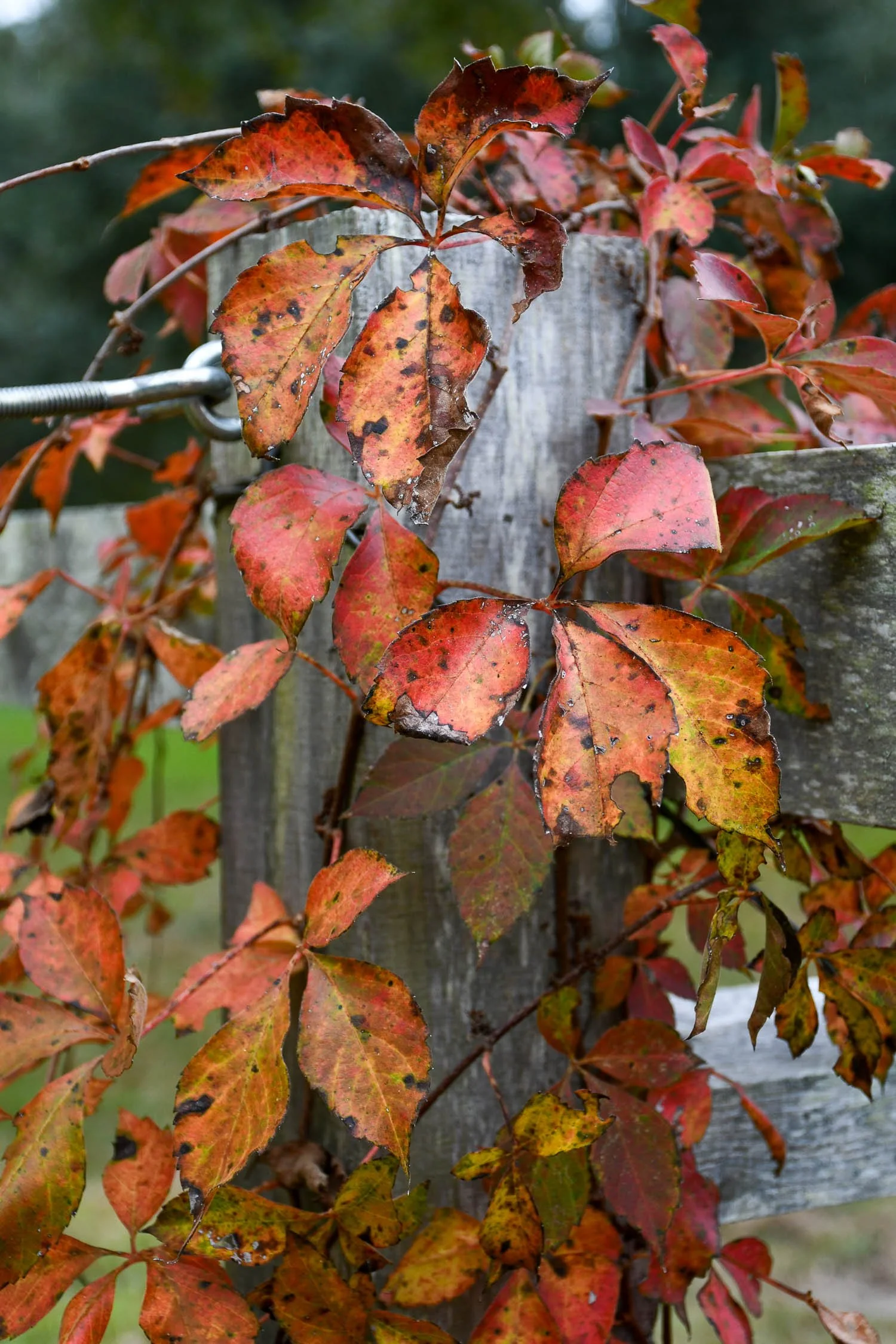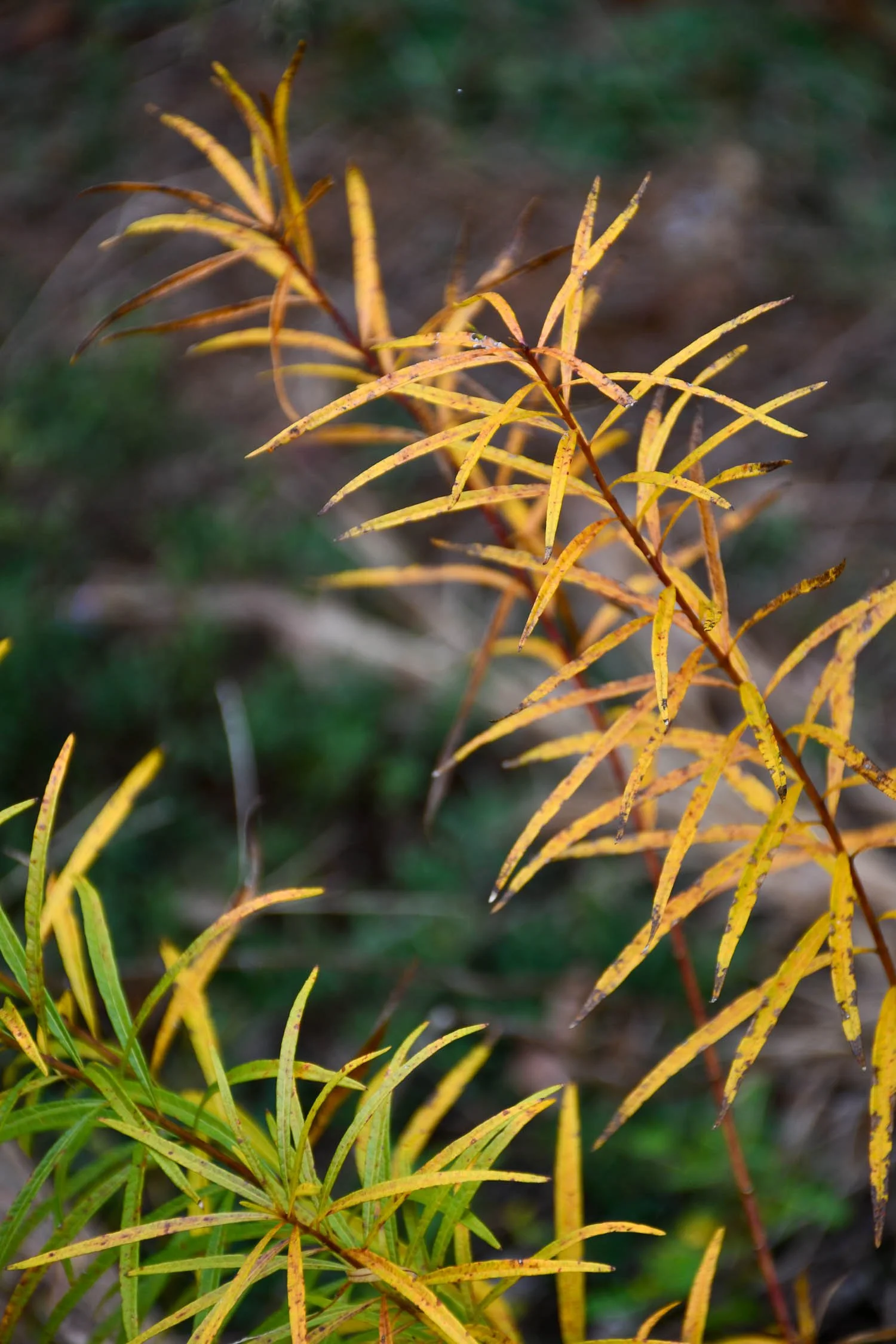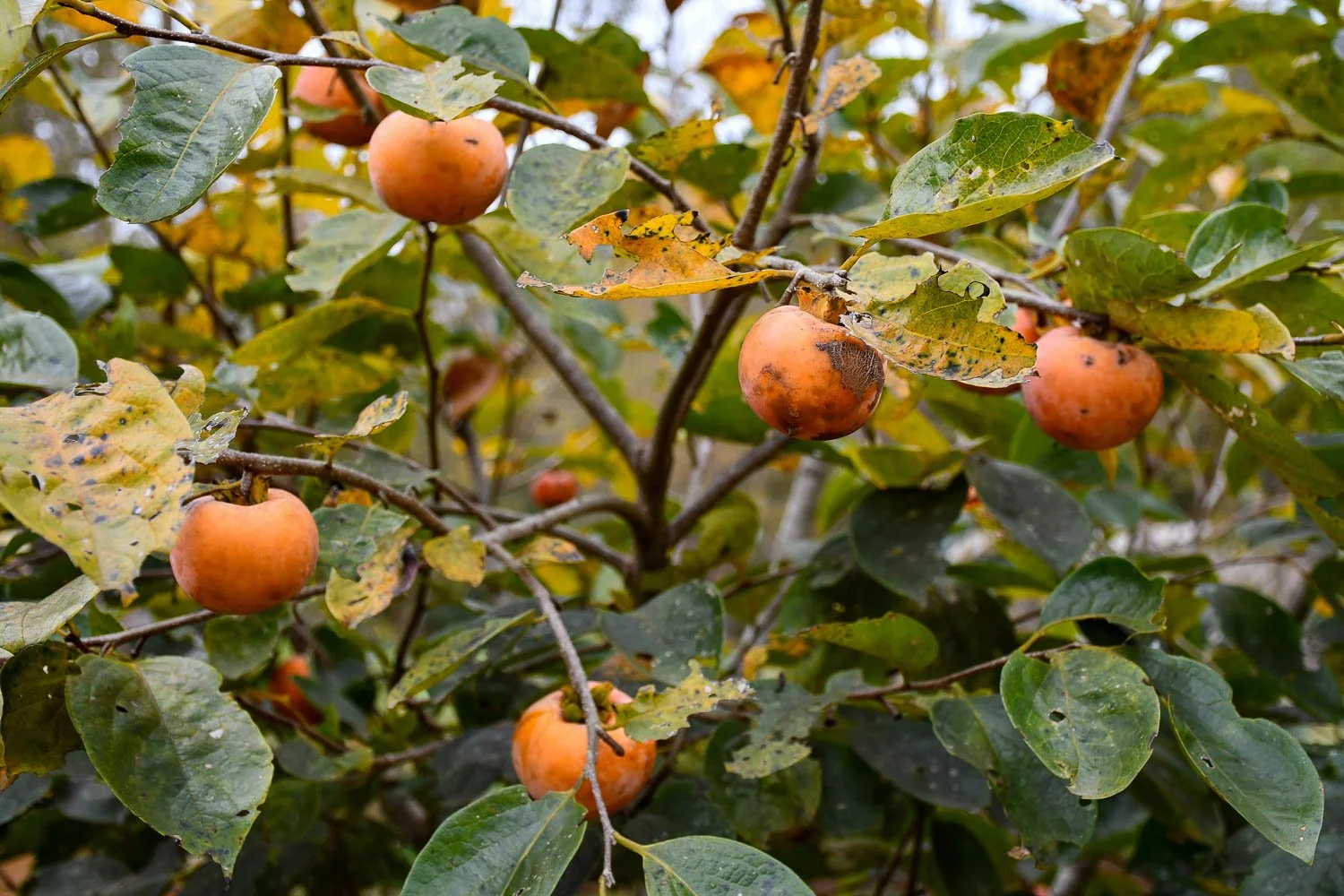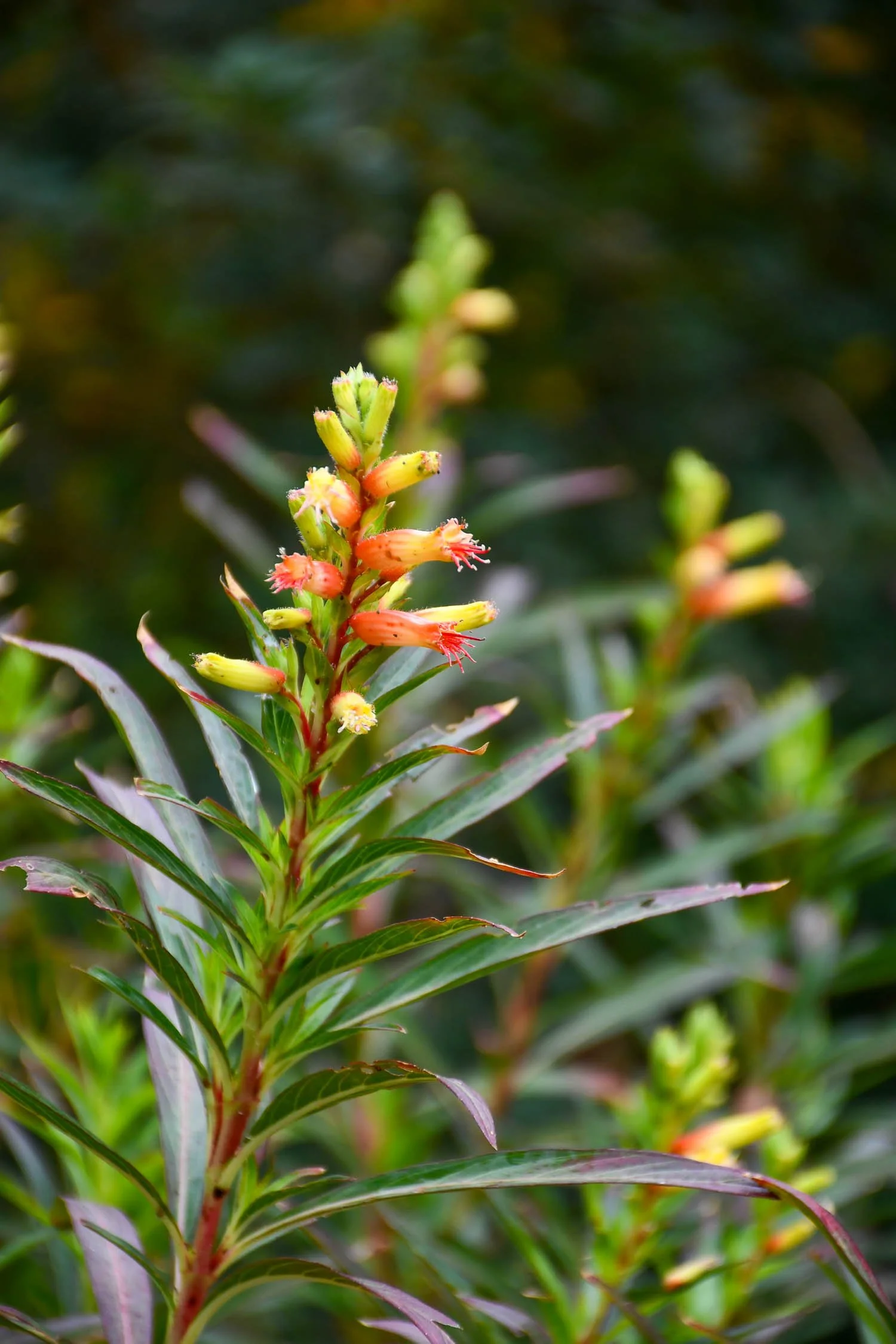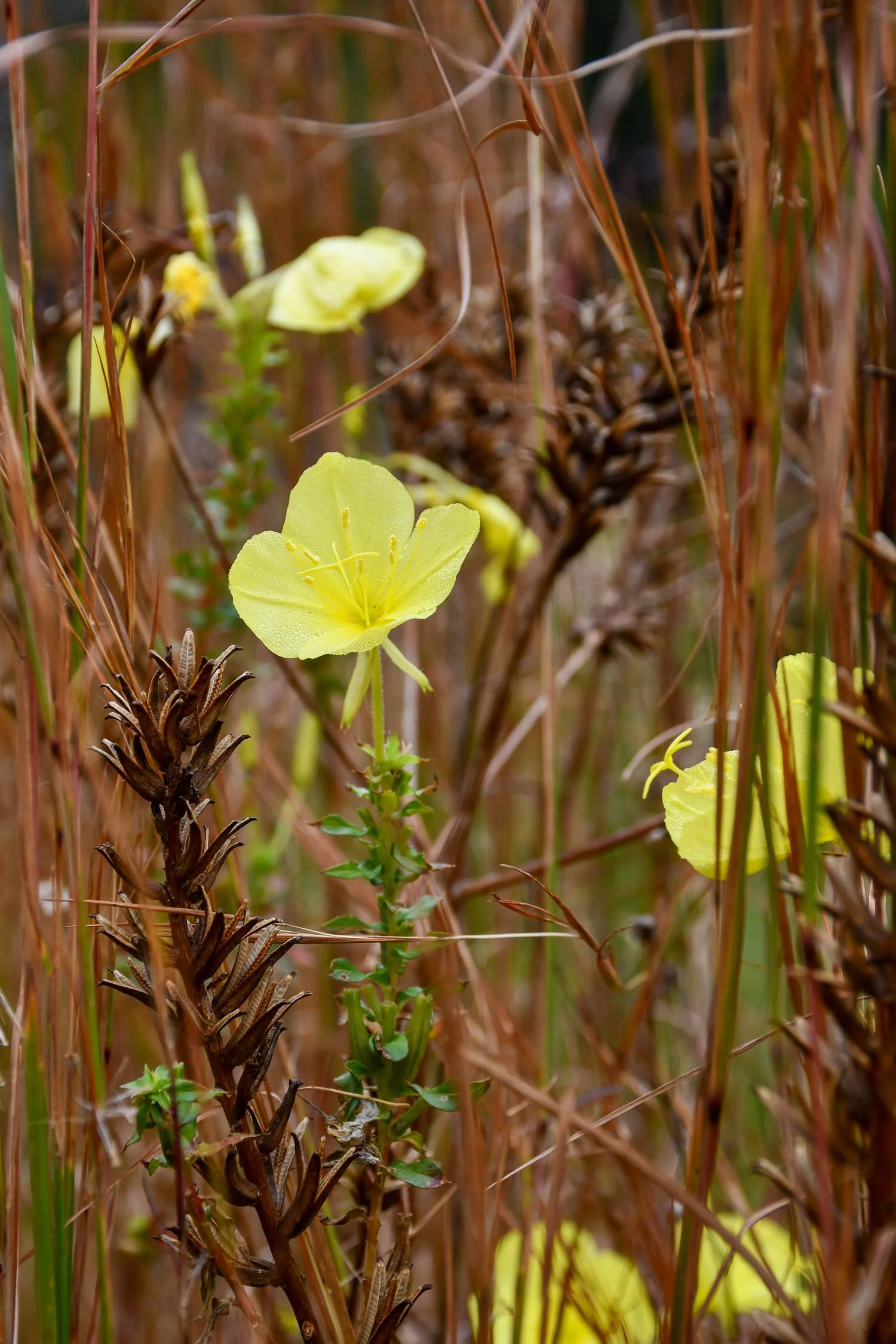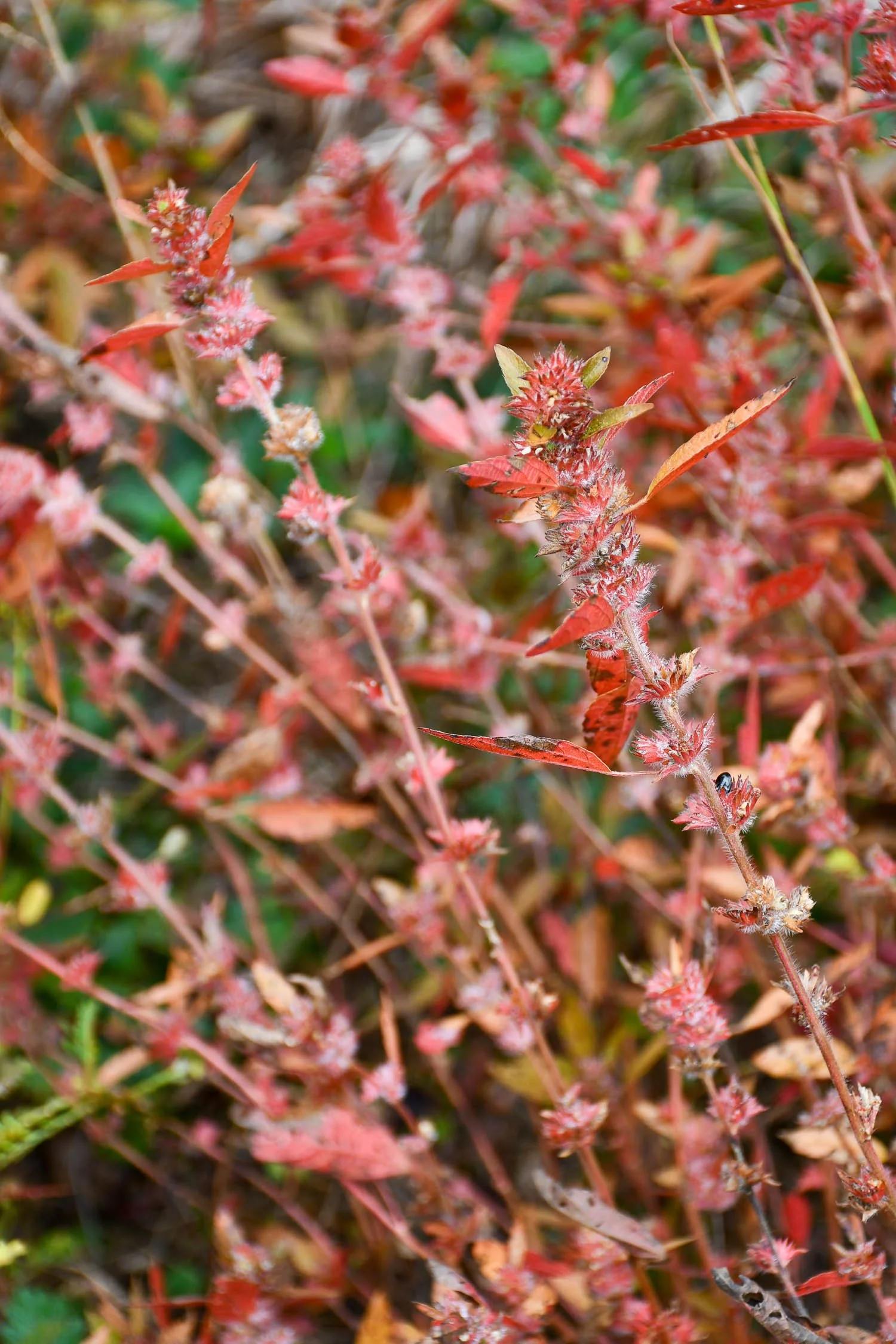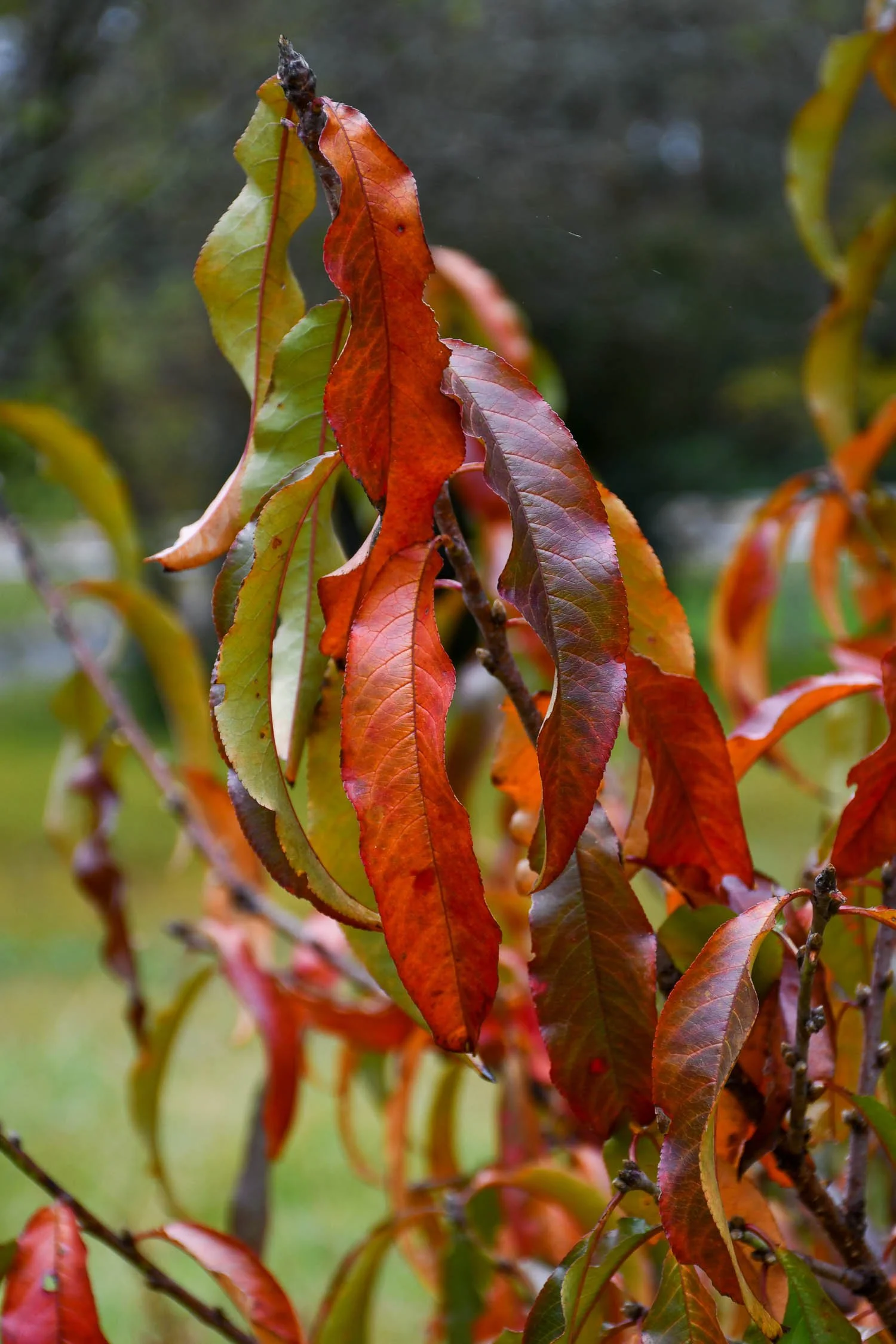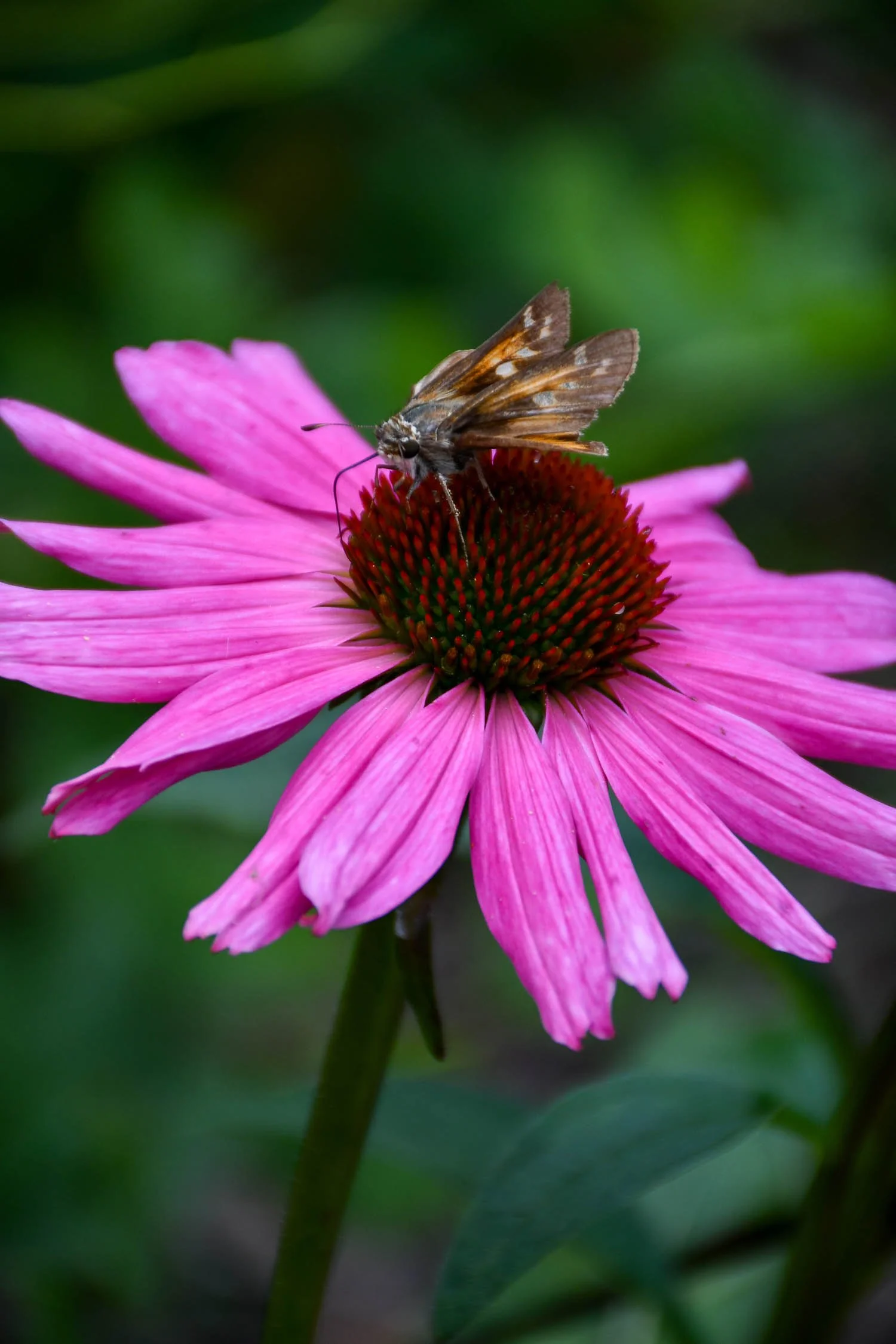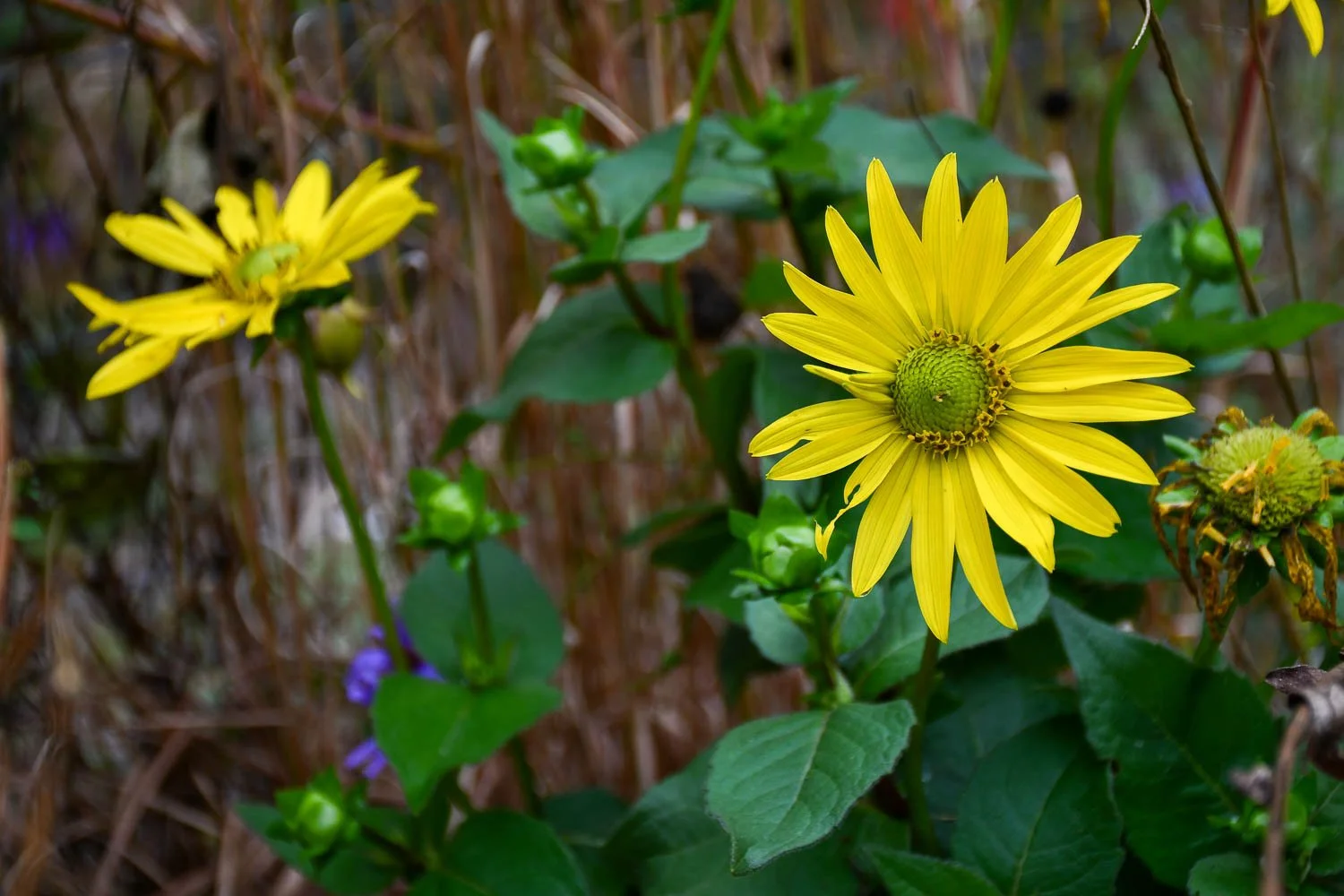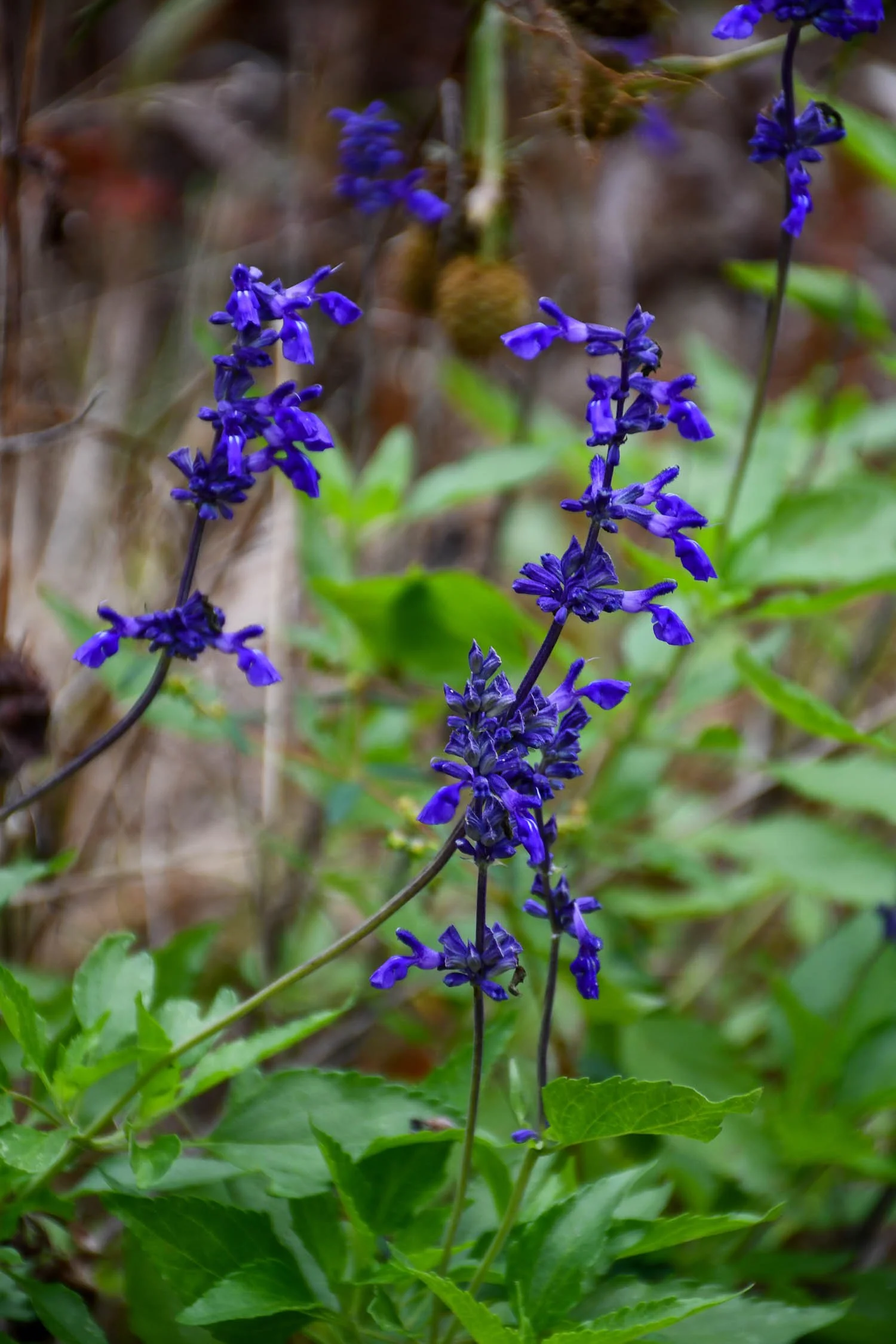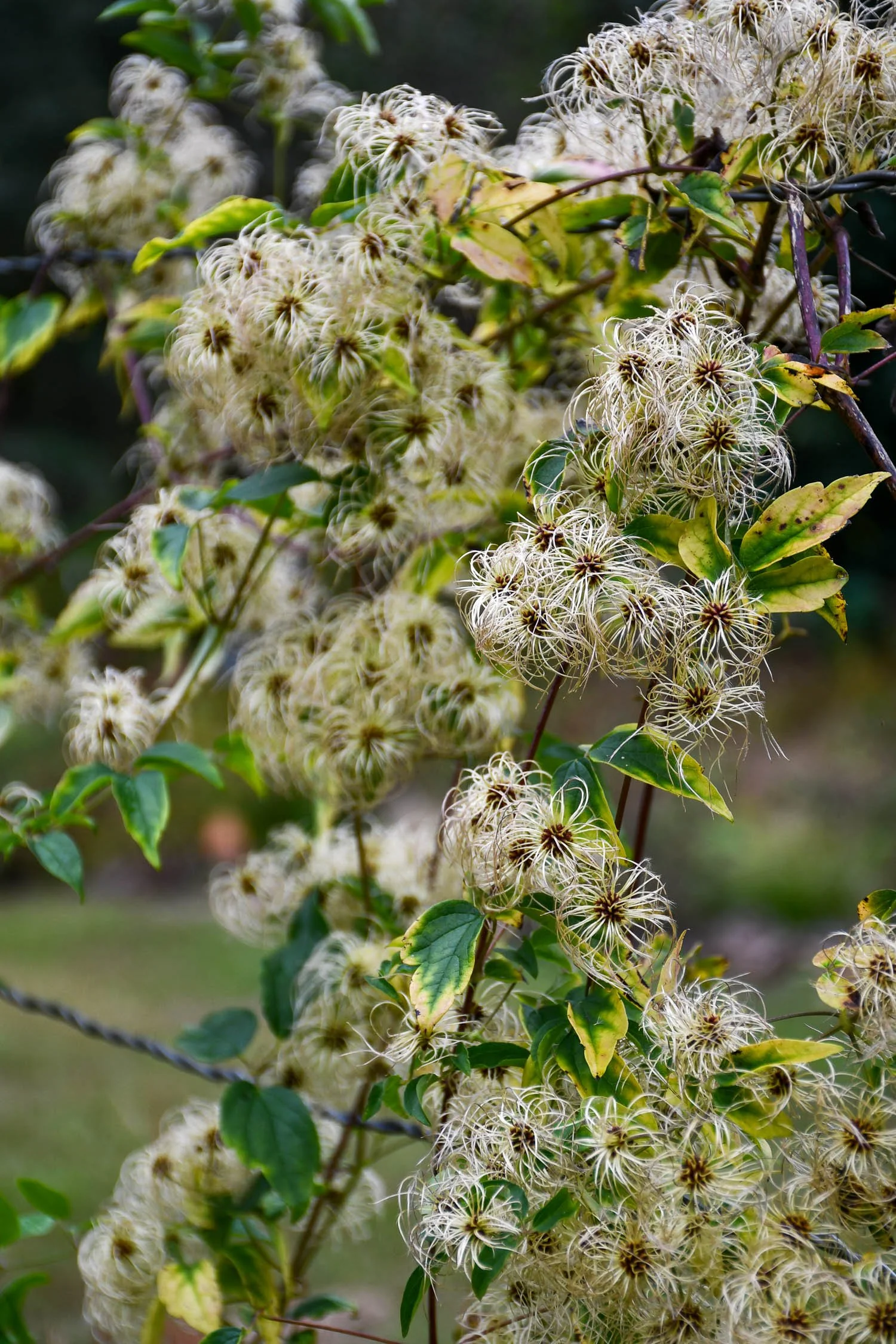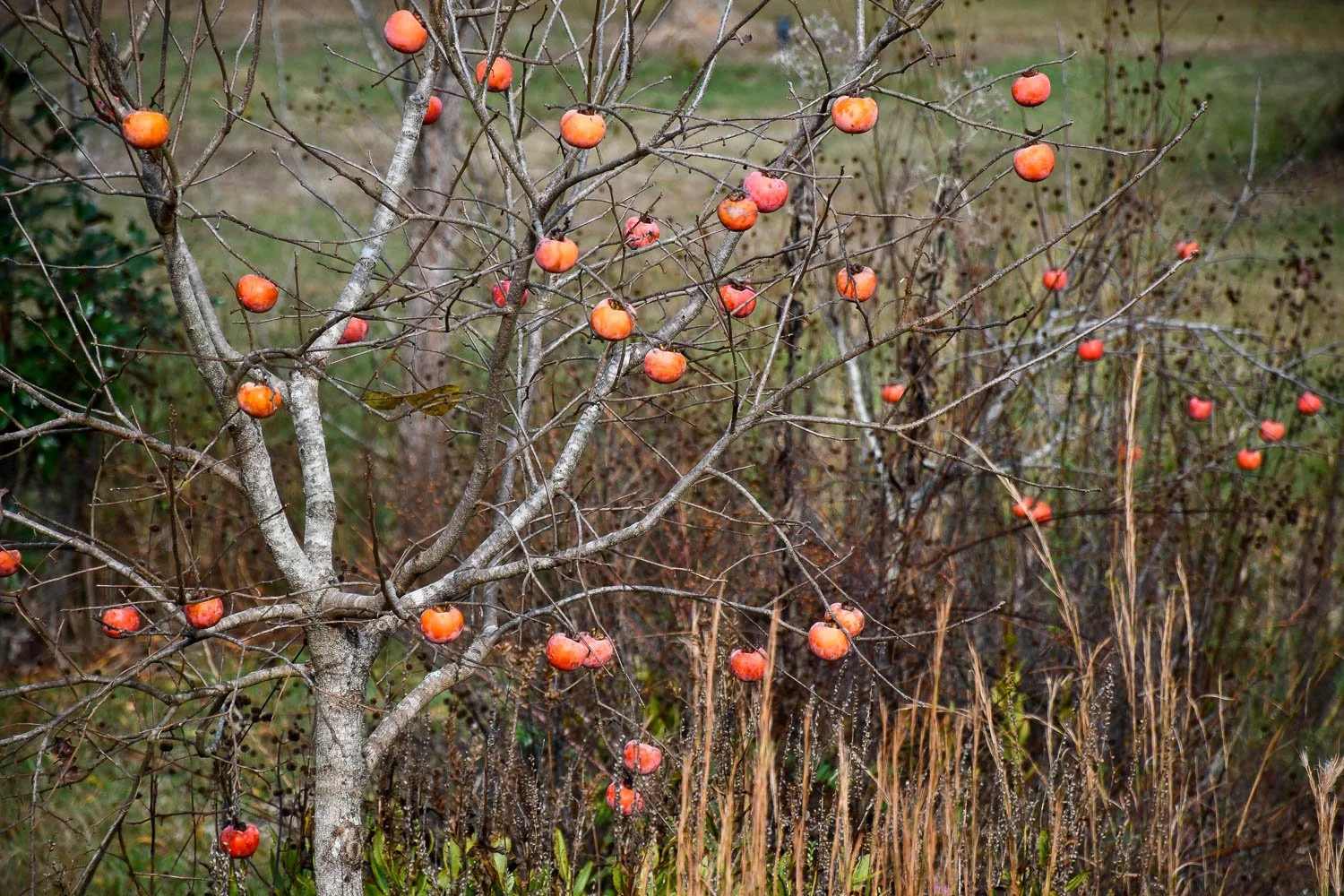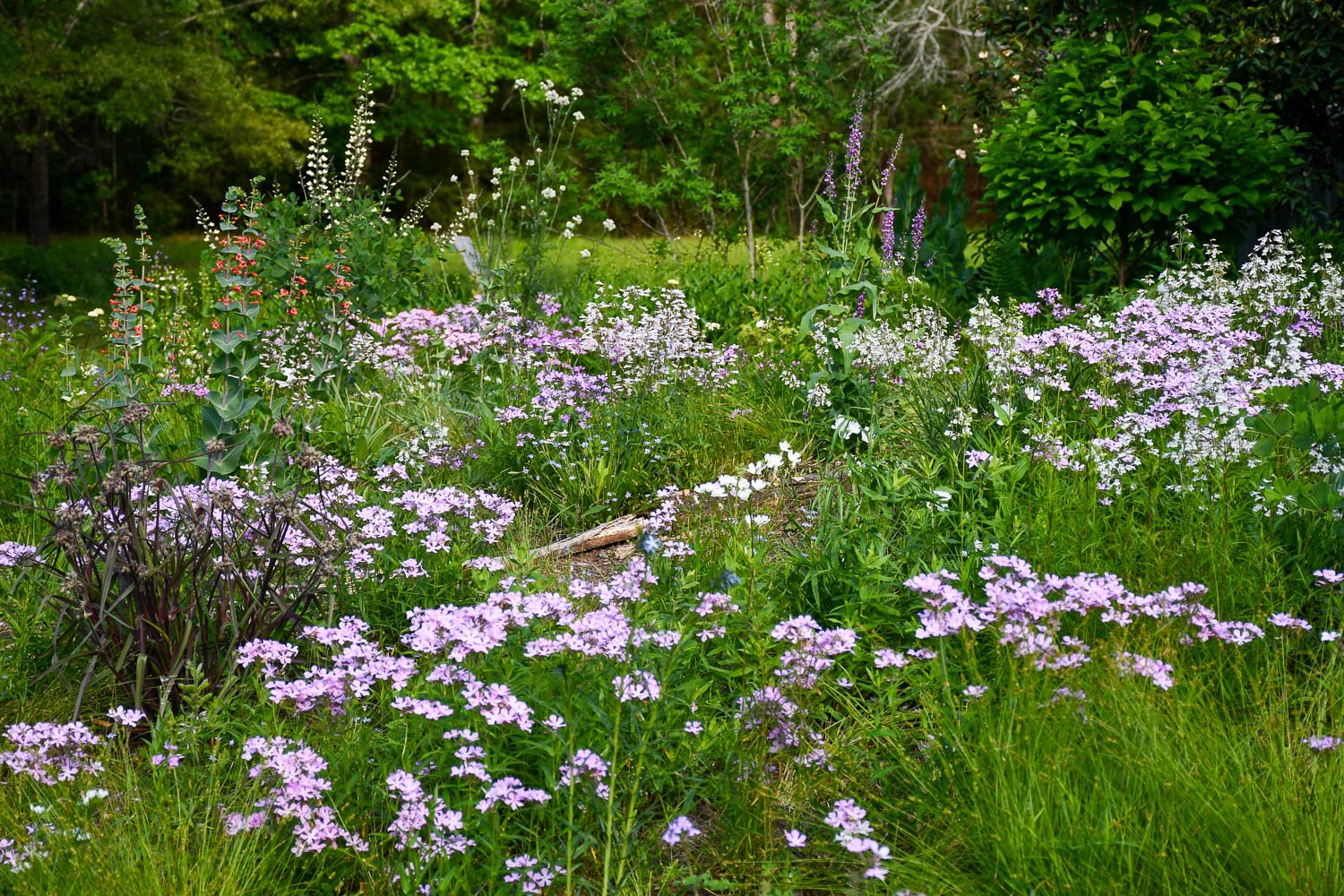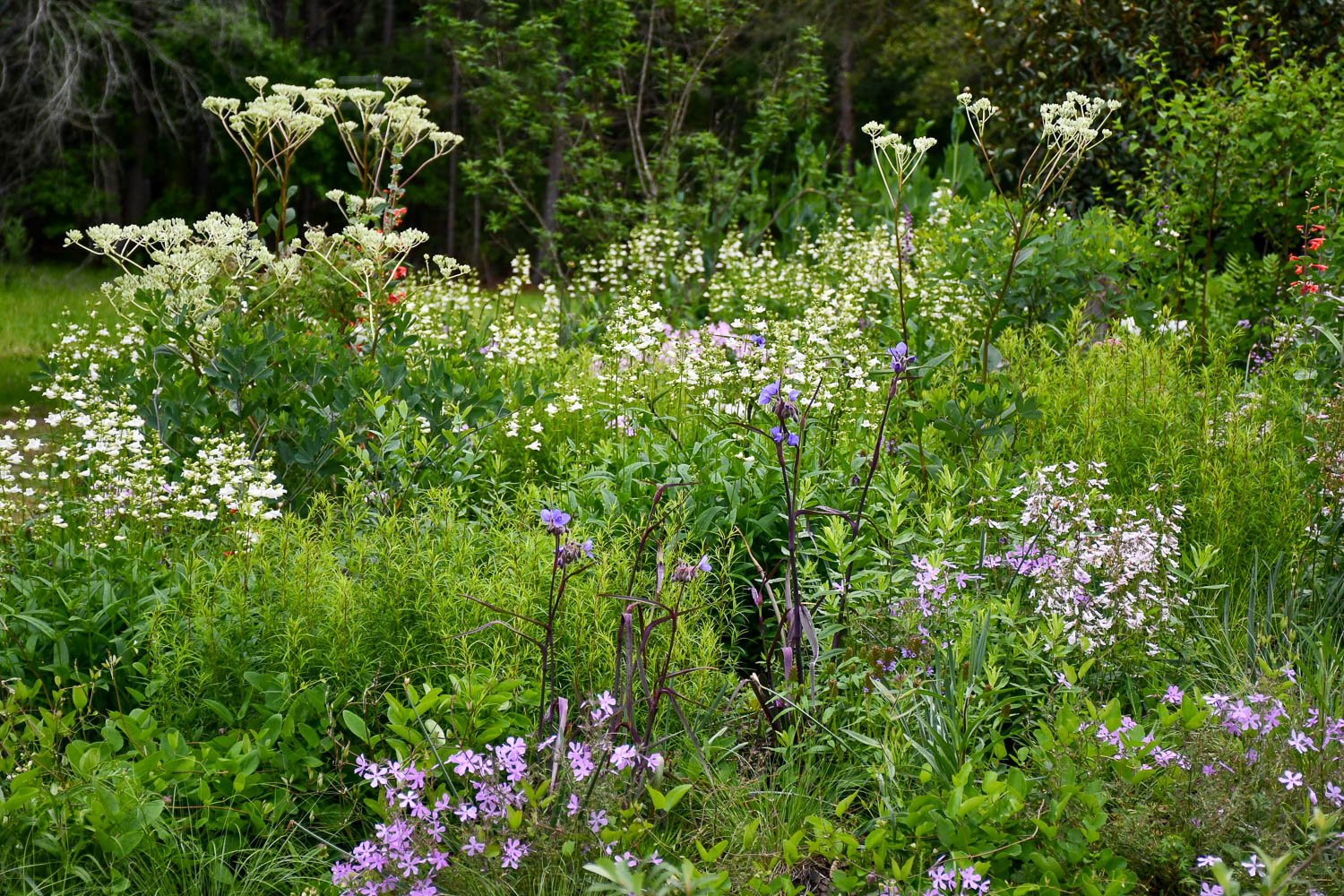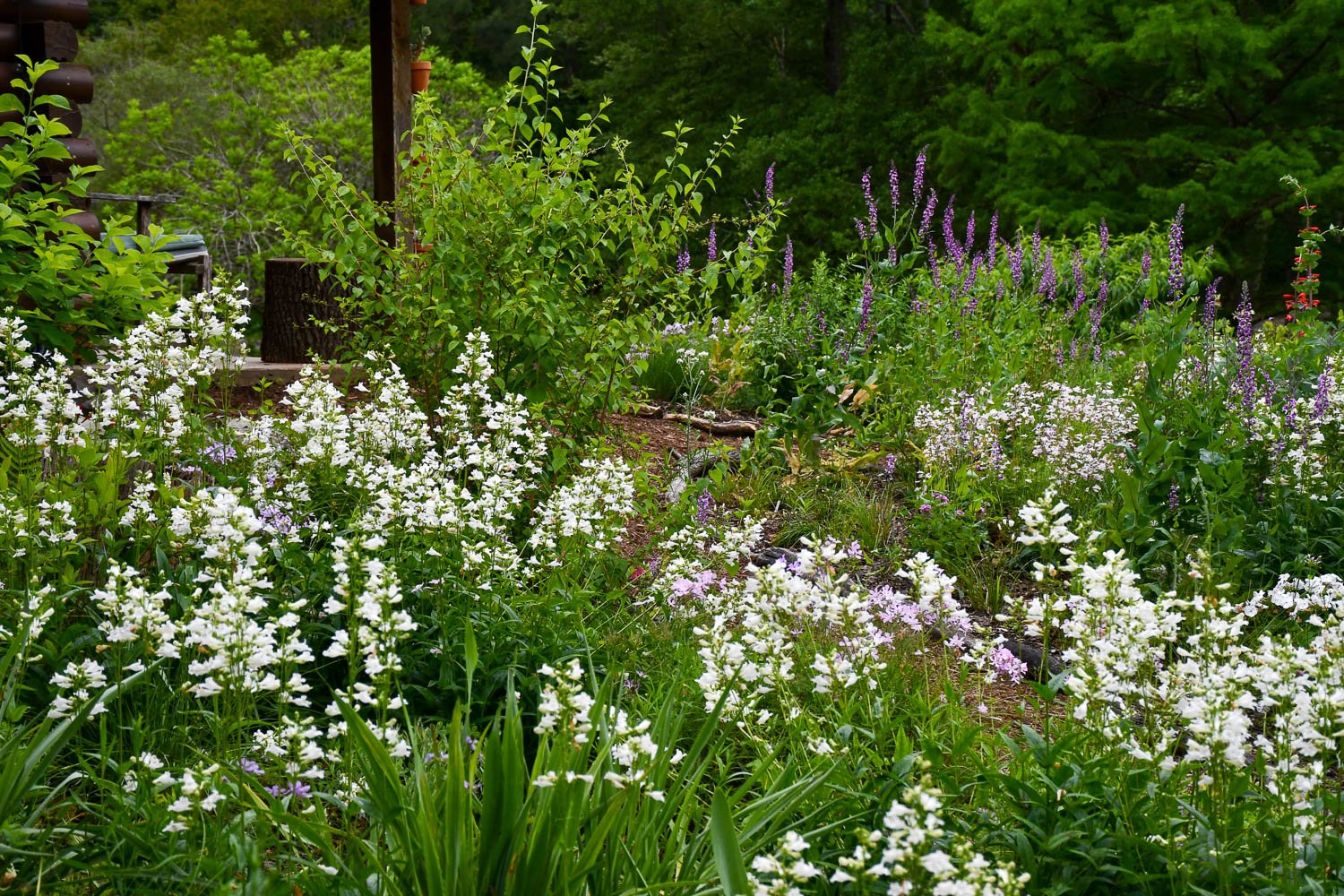It looks like fall, but it doesn’t feel like it. Days in the 80s will do that to you I suppose.
But, minus the hardy crops, the growing season has unofficially ended here at Ephemera Farm. We had our first frost last week. The basil is toast, and the trees are shedding their leaves in earnest. The hardy crops still hang on, though.
I find first frost a demarcation that separates the growing season from the coming pause of winter. The forecast had called for 24°F, and I spent a good chunk of the weekend readying everything for some serious temperatures just in case. Disconnecting hoses, putting row cover up, and bringing tender plants inside are all small tasks but they accumulate to make a busy afternoon. Fortunately, it didn’t get quite that cold, but we had a night just below freezing. 29°F wasn’t enough to fully zap plants, but it is enough to say it’s closing time.
In the midst of scurrying around, I found myself pulled to plants to enjoy the last bits of color of the season in the garden. Out of all the months here that the garden shines, April is first, but November is a close second. Sure, spring has its blooms, but with autumn we have the benefit of fall foliage as the leaves change to sensational colors as they say their last hurrah before falling to the ground.
I love Hamamelis virginiana (American witch hazel) for the winter flowers but also the autumn golden fall foliage.
I was just thinking the other day that I wish I had some Parthenocissus quinquefolia (Virginia creeper) for fall color, and lo and behold I found some on a fence post in the patch.
Amsonia hubrichtii BUTTERSCOTCH (Arkansas bluestar) is finally getting big enough to show some good fall color.
I try to pay attention to the reds, yellows, and oranges in the forests of our borrowed landscape around us and ask how can I bring these colors into our garden. For example, in our orchard, our persimmons have their best crop they’ve ever had on them. They are maturing into nice small trees, and their orange orbs hang like the trees grabbed the sunset sun right out of the sky and held it in their branches.
And, the orange combines nicely with the nearby fall color on Taxodium distichum (bald cypress), Prunus persica ‘Junegold’ (peach), and Andropogon virginicus (broomsedge) that we have. There are late flowers on Oenothera rhombipetala (four-point evening primrose), which I just welcomed to the garden this year. And, with the split seed capsules, it appears I’ll have plenty next year. Even a little Acalypha virginica (copperleaf) weed is growing on me as it too is getting in on the fall color action.
I have other plants in holding that can play off this warm color scheme. I have Cuphea micropetala (candy corn cuphea), Gladiolus × dalenii ‘Halloweenie’ (sword lily, header image), and Solidago stricta (header image). They will be moving to some of the orchard beds next year.
The orange orbs of Diospyros NIKITA’S GIFT begin turning ripe. The leaves have just begun to fall, and with first frost leaves will drop and better reveal the fruit.
A few candy corn flowers hang on Cuphea micropetala (candy corn cuphea).
A few late flowers still remain on Oenothera rhombipetala (four-point evening primrose) amongst their already split capsules.
Over the past few years I noticed this weed Acalypha virginica (Virginia copperleaf) has good fall color in the orchard, and I have to say it’s growing on me.
I was surprised by the fall color in our orchard on Prunus persica ‘Junegold’.
There are other flowers still in bloom around the garden, and the insects have no trouble finding the last flowers of the season. Symphyotrichum lanceolatum (panicled aster) is one of my latest asters to flower, and it is swarmed with pollinators. The Monarchs that have come through the past several weeks flock to its pale pink blooms. And, there are others that are sporting blooms—the last blue spikes on Salvia farinacea ‘Henry Duelberg’ (mealycup sage), a late Echinacea purpurea (purple coneflower), and out of season blooms on a juvenile Silphium perfoliatum (cup plant).
I also enjoy the fruit that are ripening at the close of the season. There’s a haze of seed heads from Clematis virginiana (virgin’s bower) hanging on the fence, and for the first time my Ilex decidua ‘Finch’s Golden’ (possumhaw) has gotten large enough to have a decent crop of fruit. I can’t wait to see it much taller and glowing gold as it ages.
I saved this Symphyotrichum lanceolatum (panicled aster) from the bulldozer down the road, and it has become one of my favorites for November. It blooms for weeks, and is flocked by pollinators.
A Huron Skipper enjoys a late bloom on Echinacea purpurea
A seedling Silphium perfoliatum (cup plant) still blooms, and I’ve watched Gulf Fritillaries work them over the past few days.
The cobalt blue flowers on Salvia farinacea ‘Henry Duelberg’ are brilliantly colored against dying vegetation.
The haze of Clematis virginiana (virgin’s bower) still provides interest at the close of the season.
The fruit on Ilex decidua ‘Finch’s Golden’ is just starting to color up. This yellow-fruited selection is a nice alternative as a possumhaw.
With first frost, I find myself looking back. Behind me was a really decent growing season with regular rain and only a handful of days above 100°F. While there was much to celebrate in the garden with flowers and food, I still had my fair share of plant problems. I haven’t seen so much fungal disease I think ever here. Soil issues maybe have contributed as the results from samples I submitted have shown some low pH in certain areas and very low nutrients in others. So, I’ll have to apply amendments to see if that rectifies issues in the coming season.
With first frost, I’m also looking forward, perhaps even more so than at the start of the new year. I pay attention to what the garden will offer for the next few months. I’ve learned it is well worth assessing plantings at this sweet spot before winter collapses plants to the ground leaving only the most rugged still standing. Am I happy with what I see or not, because it will be the dominant presence in the garden for winter.
The next few months are also ripe for making changes in the garden. I have trees and shrubs I want to plant and a number of fruits on my wish list for next season. I installed new muscadine posts this summer that need to just have the wires and plants added. I’m also looking at pawpaw and mayhaw varieties that would do well here. Oh, and strawberries—I’ll attempt to keep them alive again.
But, with much on the to-do list for winter, I can’t forget the now of November. As I sit here and write, even though the asters have finished, the flowers have collapsed, and the leaves have fallen off the persimmons, there’s still much to enjoy in the garden.

